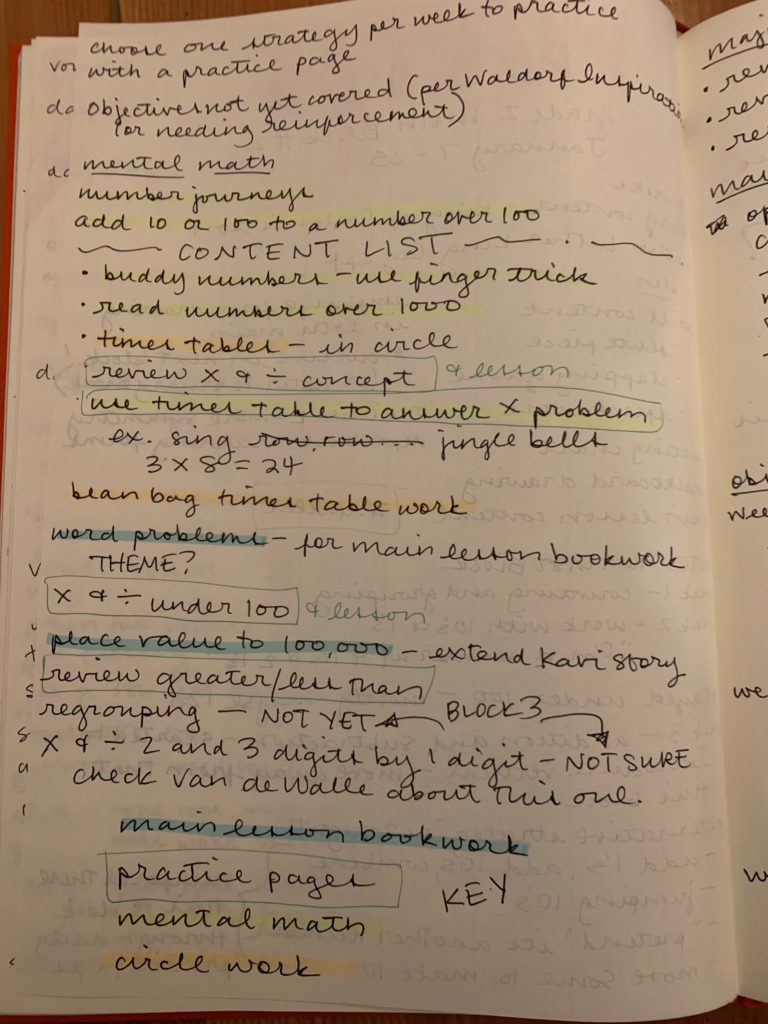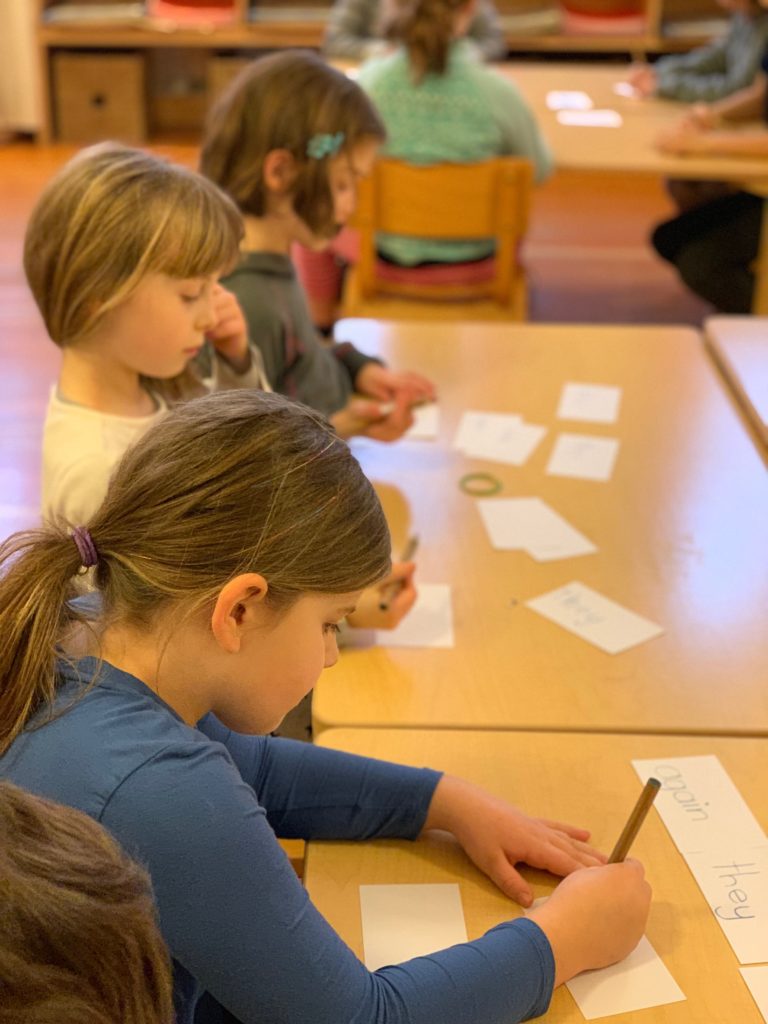It’s been a little bit since I’ve written a little update post.
Since coming back from the holiday break (just 3 days ago?!), the 2nd graders and I have been working on math. As always, to map out the block, I sat down with my planning book and figured out our objectives.

I began by thinking about where we left off with our last math block, thought about the skills my students need more practice with and then compared those thoughts with the objectives I laid out over the summer.
I was surprised to find that we’re remarkably on target and my intuitive sense for what my students need to practice is almost exactly what I had planned for this block months ago.
You can see in this photo that I also thought through the various aspects of our daily lessons and the activities that would allow us to practice the different skills.
- Blue highlight means main lesson bookwork.
- Yellow highlight skills will be practiced in mental math/warm-up time.
- Orange highlight will be during our circle, or rhythmic activities.
- The last category is for good old fashioned math worksheets — a term that can be somewhat charged, so I call them “practice pages” instead.
When I put it all together, the 3-week block looks like this:
- Week 1: Review place value and extend to 100,000. Continue with horizontal addition and subtraction.
- Week 2: Review multiplication and division. Extend to practice with number sentences.
- Week 3: Continue multiplication and division work. Move away from manipulatives and rhythm and towards working on paper.
(And if you’re looking for resources for planning your own block, here are my favorites.)
- Making Math Meaningful, 1-5 by Jamie York, Nettie Fabrie and Wim Gottenbos
- Elementary and Middle School Mathematics: Teaching Developmentally by John Van de Walle
- Teaching Student-Centered Mathematics: Developmentally Appropriate Instruction for Grades Pre-K-2
I really recognized that my students need more practice with multiplication and division. We have done some work with skip counting, times table songs and rhythm exercises, but moving from those activities to working with number sentences (ex. 3 x 4 = 12) is a leap we haven’t made yet. That will be a big goal for this math block.

At the same time, we’ll be working on reviewing the double-digit addition and subtraction skills that we learned in our first block and extending them to working with 1000’s, 10,000 and beyond. To read more about those different strategies, you can read my blog post about our first math block.
I also put together a 2nd grade math curriculum guide which is all about that first math block. You can find that here.
Waldorf Grade 2 Stories
Throughout the block I’m telling the story The King of Ireland’s Son. I’m not using the story to bring the math content — it’s just a “story for the sake of a story.” I confess, even after having three of my own children go through the Waldorf grade school, my daughter playing Fedelma in her 2nd grade play and being a Waldorf teacher for 12 years, I had never read this story. I’ve heard mixed reviews from colleagues, but I am just loving it. After months of simple little fables and one-off saint stories, The King of Ireland’s Son feels deep and rich, with the same flavor as the fairy tales I told in first grade. Just what we all need!

During our practice classes, we’re taking a little break from kid writing to give more attention to form drawing. My plan is to teach cursive after our February Break, and many of the second graders need to review lower case and do some good practice with form drawing to be prepared.
To keep up our language arts practice, we’re doing independent “read to self” time with our book boxes in the afternoons and practicing five sight words per week. As always, the 2nd graders are astounding me with their progress.

What are you teaching these days?




Leave a Reply